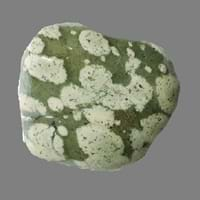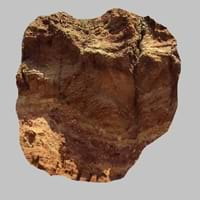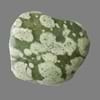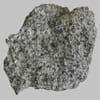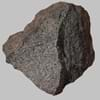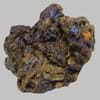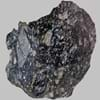Definition
Variolites are a group of dark green basic igneous rocks which exhibit pale colored spots, or spherules, especially on weathered surfaces, that give them a pockmarked appearance
A carbonate rock which is matrix supported and contains over 10% allochems in a carbonate mud matrix.
Discoverer
Unknown
Unknown
Etymology
From Latin varius, speckled, variegated
From the English mud and stone, from low German mudde and stainaz
Class
Igneous Rocks
Sedimentary Rocks
Sub-Class
Durable Rock, Hard Rock
Durable Rock, Soft Rock
Group
Volcanic
Not Applicable
Other Categories
Opaque Rock
Fine Grained Rock, Opaque Rock
Texture
Glassy, Massive, Porphyritic, Scoriaceous, Vesicular
Clastic
Color
Black, Brown, Light to Dark Grey
Black, Blue, Brown, Green, Grey, Orange, Red, White, Yellow
Durability
Durable
Durable
Scratch Resistant
Yes
Yes
Appearance
Dull and Soft
Rough and Dull
Interior Uses
Floor Tiles, Flooring, Homes, Hotels, Kitchens
Decorative Aggregates, Flooring, Interior Decoration
Exterior Uses
Garden Decoration, Office Buildings
As Facing Stone, Garden Decoration, Roof Tiles
Other Architectural Uses
Curbing
Curbing
Construction Industry
As Dimension Stone, Cobblestones, Rail Track Ballast, Roadstone
Cement Manufacture, Construction Aggregate, for Road Aggregate, Making natural cement, Raw material for the manufacture of mortar
Medical Industry
Not Yet Used
Not Yet Used
Antiquity Uses
Artifacts, Monuments, Sculpture
Artifacts, Sculpture
Commercial Uses
Cemetery Markers, Creating Artwork
Cemetery Markers, Pottery
Types
Not Available
Marl, Shale and Argillite
Features
Has High structural resistance against erosion and climate, Very fine grained rock
Available in Lots of Colors and Patterns, Smooth to touch, Very fine grained rock
Archaeological Significance
Monuments
Used
Not Yet Used
Famous Monuments
Data Not Available
Not Applicable
Famous Sculptures
Data Not Available
Data Not Available
Formation
Variolites are a group of dark green basic igneous rocks that exhibit pale colored spots on weathered surfaces that give them a pockmarked appearance.
Wackestone is a type of sedimentary rock formed when a river carries or transports pieces of broken rock as it flows. These particles settle down and are then compacted due to high temperature and pressure hence forming Wackestone.
Mineral Content
Olivine, Plagioclase, Pyroxene
Biotite, Chlorite, Feldspar, Micas, Muscovite or Illite, Plagioclase, Pyrite, Quartz
Compound Content
Aluminium Oxide, CaO, Iron(III) Oxide, FeO, Potassium Oxide, MgO, MnO, Sodium Oxide, Phosphorus Pentoxide, Silicon Dioxide, Titanium Dioxide
Aluminium Oxide, NaCl, CaO, Iron(III) Oxide, Silicon Dioxide
Types of Metamorphism
Burial Metamorphism, Cataclastic Metamorphism, Contact Metamorphism, Hydrothermal Metamorphism, Impact Metamorphism, Regional Metamorphism
Not Applicable
Types of Weathering
Biological Weathering, Chemical Weathering, Mechanical Weathering
Biological Weathering, Chemical Weathering, Mechanical Weathering
Types of Erosion
Not Applicable
Chemical Erosion, Sea Erosion, Wind Erosion
Grain Size
Not Applicable
Very fine-grained
Fracture
Conchoidal
Conchoidal
Streak
White to Grey
White
Porosity
Less Porous
Highly Porous
Luster
Not Available
Dull
Cleavage
Not Available
Perfect
Specific Gravity
2.8-3
2.2-2.8
Transparency
Opaque
Opaque
Density
2.9-3.1 g/cm3
2.4-2.8 g/cm3
Resistance
Heat Resistant, Pressure Resistant, Wear Resistant
Heat Resistant, Impact Resistant
Deposits in Eastern Continents
Asia
India, Russia
Bangladesh, China, India, Russia
Africa
South Africa
Ethiopia, Kenya, Morocco, South Africa, Tanzania
Europe
Iceland
Austria, France, Germany, Greece, Italy, Romania, Scotland, Spain, Switzerland
Others
Not Yet Found
Not Yet Found
Deposits in Western Continents
North America
Canada, USA
USA
South America
Brazil
Bolivia, Chile, Colombia, Ecuador, Peru, Venezuela
Deposits in Oceania Continent
Australia
Not Yet Found
New South Wales, New Zealand, Queensland, Victoria, Western Australia
All about Variolite and Wackestone Properties
Know all about Variolite and Wackestone properties here. All properties of rocks are important as they define the type of rock and its application. Variolite belongs to Igneous Rocks while Wackestone belongs to Sedimentary Rocks.Texture of Variolite is Glassy, Massive, Porphyritic, Scoriaceous, Vesicular whereas that of Wackestone is Clastic. Variolite appears Dull and Soft and Wackestone appears Rough and Dull. The luster of Variolite is not available while that of Wackestone is dull. Variolite is available in black, brown, light to dark grey colors whereas Wackestone is available in black, blue, brown, green, grey, orange, red, white, yellow colors. The commercial uses of Variolite are cemetery markers, creating artwork and that of Wackestone are cemetery markers, pottery.
